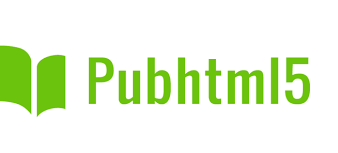Social media in politics
The role of social media in the 2015 elections in Mexico City
DOI:
https://doi.org/10.32776/arcsh.v7i13.282Keywords:
digital social networks, social media, elections, campaigns, Mexico, linear regressionsAbstract
The main objective of this research is to analyze the role that six digital social networks had in obtaining votes during the elections of 2015 in Mexico City. The theoretical approach was political communication, on the basis of the hypothesis that the greater the presence of a candidate in different digital social media, the greater the number of votes obtained. As a result, it is demonstrated that there is a positive influence in the use of digital networks to obtain votes. The study had some limitations, like the fact of not being able to reliably prove which of the studied digital platforms would have a bigger impact when obtaining votes in future scenarios. The research allows to conclude that, by emphasizing two different variables –the number of subscribers that each candidate has in the digital networks and the information sent through these networks– it is observed that not all digital social networks contribute significantly or in the same way to the explanation of this phenomenon. The value of this paper lies on the analysis of a phenomenon of digital electoral policies communication, in a period of incipient use of digital social networks.
Downloads
References
AGHAEIL, S., M. NEMATBAKHSH, H. FARSANI (2012). “Evolution of the World Wide Web: From Web 1.0 to Web 4.0” International Journal of Web & Semantic Technology. Vol. 3, Núm. 1 (enero).
AMMANN, S. (2010). “A Political Campaign Message in 140 Characters or Less: The Use of Twitter by U.S. Senate Candidates in 2010” Recuperado de http://papers.ssrn.com/sol3/papers.cfm?abstract_id=1725477
BRENNER, J. & A. SMITH (2013). “72% of Online Adults are Social Networking Site Users” Recuperado de http://www.pewinternet.org/2013/08/05/72-of-online-adults-are-social-networking-site-users/
CERON, A., G. D’ADDA (2015). “E-campaigning on Twitter: The effectiveness of distributive promises and negative campaign in the 2013 Italian election”. New media & society. Vol. 18, Núm. 9 (febrero).
CHADWICK, A. (2006). Internet politics: States, citizens and new communication technologies. Nova York: Oxford University Press.
CORMODE, G., B. KRISHNAMURTHY (2008). “Key differences between Web 1.0 and Web 2.0”. First Monday. Peer-reviewed Journal on The Internet. Vol. 13, Núm. 6 (junio).
DIXON, W. (1980). “Efficient analysis of experimental observations”. Annual review of pharmacology and toxicology. Vol. 20, Núm. 1.
FIELD, A. (2009). Discovering statistics using SPSS. Londres: Sage publications.
FOOT, K., S. SCHNEIDER (2006). Web Campaigning. Cambridge: The MIT Press.
GUEORGUIEVA, V. (2008). “Voters, MySpace, and YouTube: The Impact of Alternative Communication Channels on the 2006 Election Cycle and Beyond”. Social Science Computer Review. Vol. 26, Núm. 3 (diciembre).
GULATI, G., C. WILLIAMS (2011). “Diffusion of Innovations and Online Campaigns: Social Media Adoption in the 2010 U.S. Congressional Elections”. Recuperado de http://ssrn.com/abstract=1925585
HOAGLIN, D., B. IGLEWICZ (1987). “Fine tuning some resistant rules for outlier labeling”. Journal of American Statistical Association. Núm. 82 (marzo).
LASSEN D., A. BROWN (2011). “Twitter: The Electoral Connection?”. Social Science Computer Review. Vol. 29, Núm. 4.
NORRIS, P. (2004). “Political Communication. For the Encyclopedia of the Social Sciences”. Recuperado de http://www.hks.harvard.edu/fs/pnorris/Acrobat/Political%20Communications%20encyclopedia2.pdf
PERCASTRE-MENDIZÁBAL, S., C. PONT-SORRIBES, I. CODINA (2017). “A sample design proposal for the analysis of Twitter in political communication”. El profesional de la información. Vol. 26, Núm. 4 (julio-agosto).
RECUERO, R. (2016). “O twitter como esfera pública: como foram descritos os candidatos durante os debates presidenciais do 2º turno de 2014?”. Revista Brasileira de Lingüística Aplicada. Vol. 16, Núm. 1 (enero-marzo).
TUMASJAN, A., T. SPRENGER, P. SANDNER, I. WELPE (2010). “Predicting Elections with Twitter: What 140 Characters Reveal about Political Sentiment”. Recuperado de http://www.aaai.org/ocs/index.php/ICWSM/ICWSM10/paper/view/1441/1852
TUKEY, J. (1977). Exploratory Data Analysis. Reading: Addison-Wesley.
WOLTON, D. (1989). “La Communication politique: Construction d'un model”. Hermès. Núm. 4.























